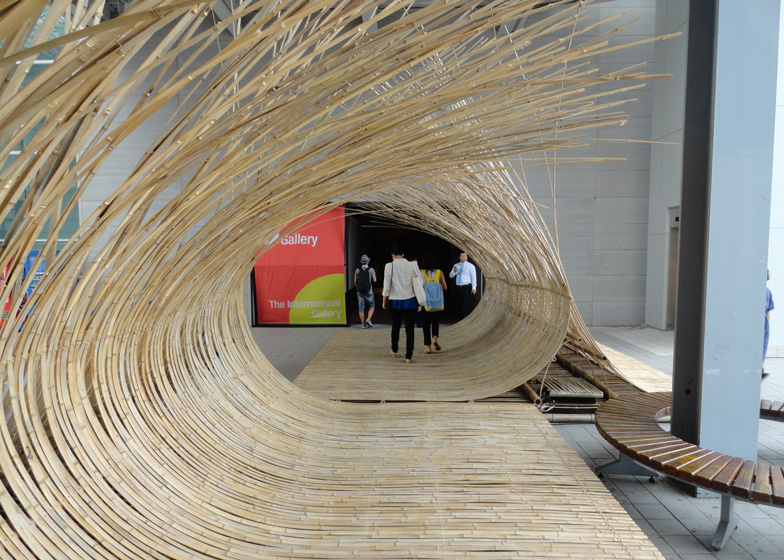Japanese architect Kengo Kuma has bent bamboo into walkways and seating areas at this year's Gwangju Design Biennale in South Korea, which opens today.
Kengo Kuma spilt the bamboo into three-centimetre-wide strips to make it easy to bend, so visitors to the Gwangju Design Biennale can walk over or recline on the springy surfaces.
Bamboo is a common material in both Japanese and Korean architecture and Kuma used it in this installation for its flexibility and tactility.
"The objective of my exhibit at the Biennale is to reconnect the human body with architecture," said Kuma.
On each section the ends of the bamboo strips are attached along two edges of a fixed base, bowing up against each other where the two sides meet in the middle.
This causes one side to curl back on itself and the other to flow over the top, making a wave shape.
The curves create seating areas that can be leant up against or laid down on.
At the biennale the waves outside form a twenty-metre-long passage between two exhibition halls, where loose strands along the top quiver in the wind.
The direction of the waves is alternated so one side is always open but the walkway is constantly covered.
The same design continues inside one of the galleries, where staggered sections create smaller pockets of seating space.
In the dark exhibition space elements are lit from below, illuminating the splaying strands.
Open until 3 November, the Gwangju Design Biennale also features the travelling Designed To Win exhibition of sport equipment first shown last year at London's Design Museum during the Olympic Games.
Kuma has used bamboo in his installations on a few occasions, including a concept home based on traditional Japanese interiors and as foliage amongst a topographical landscape of stone and water.
The architect's latest proposals for a new outpost of the V&A museum in Dundee received the green light last month. He also recently completed a contemporary arts museum with a chequered glass facade in Marseille.
See more bamboo design »
See more architecture and design by Kengo Kuma »
See more design installations »

